BuprestidaeMore Buprestidae Jewel Beetles Astraeus Calodema plebeia Castiarina Cyrioides Diadoxus Diphucrania Melobasis Merimna atrata Metaxymorpha gloriosa Stigmodera Temognatha Torresita cuprifera
The Jewel Beetles are a group of beetles in the family Buprestidae, the largest of the family of beetles that include some 15,500 species across 775 genera. One of the most recognisable families, many of the the Jewel Beetles are brightly coloured, whilst some species have a beautiful iridescent, metallic sheen. Collectively known as “Jewel Beetles” or “Metallic Wood-boring Beetles”, the larvae of this family of beetles are known as “Flatheaded Borers”.


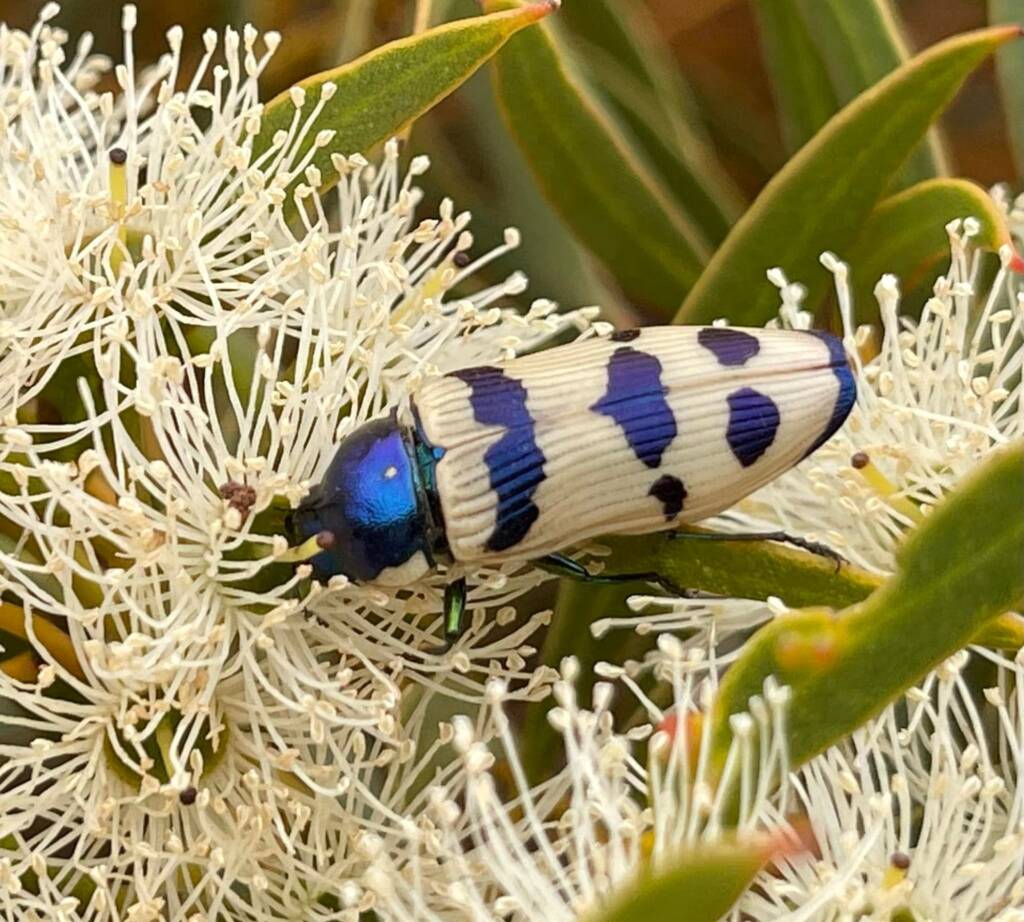





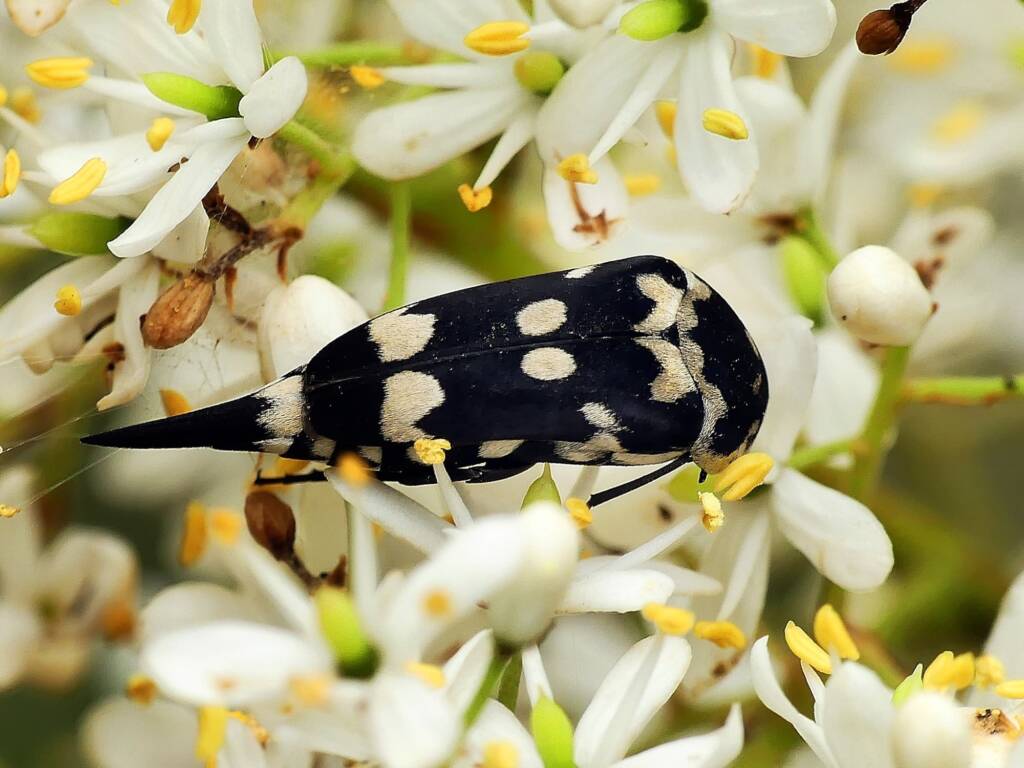







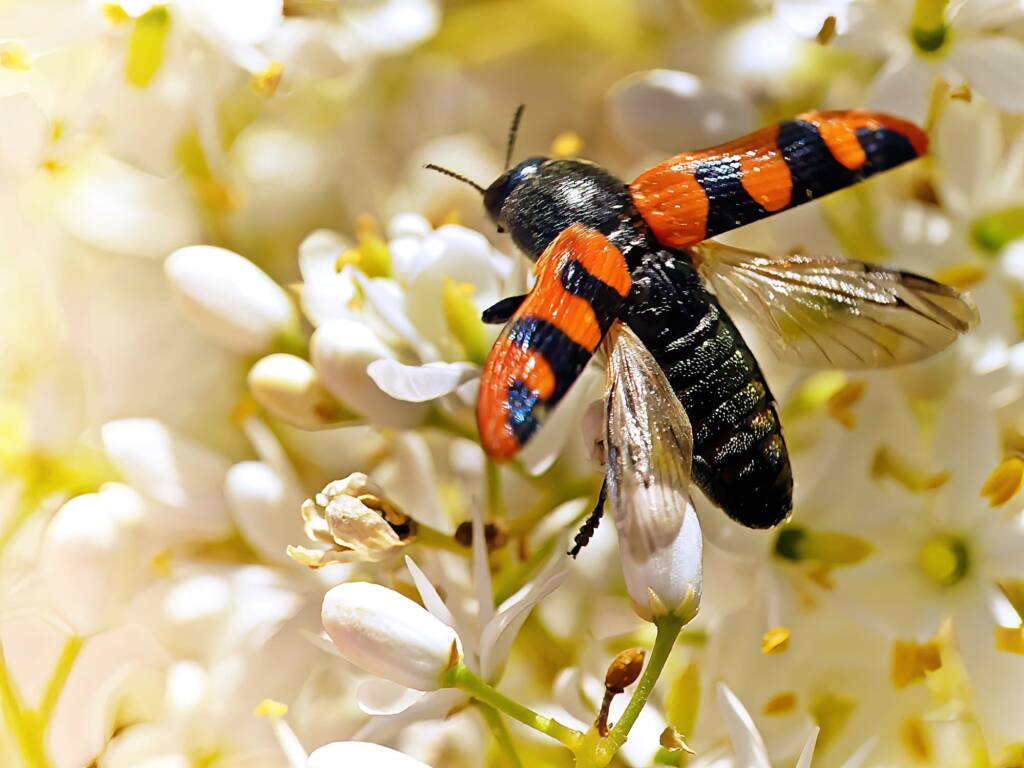
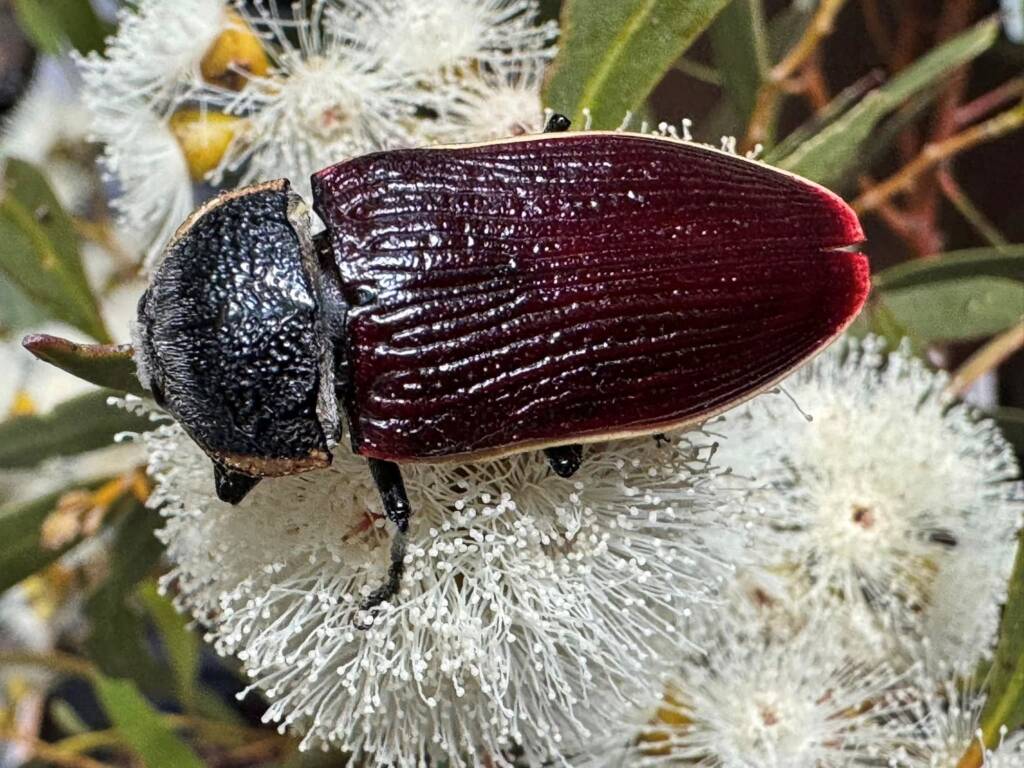
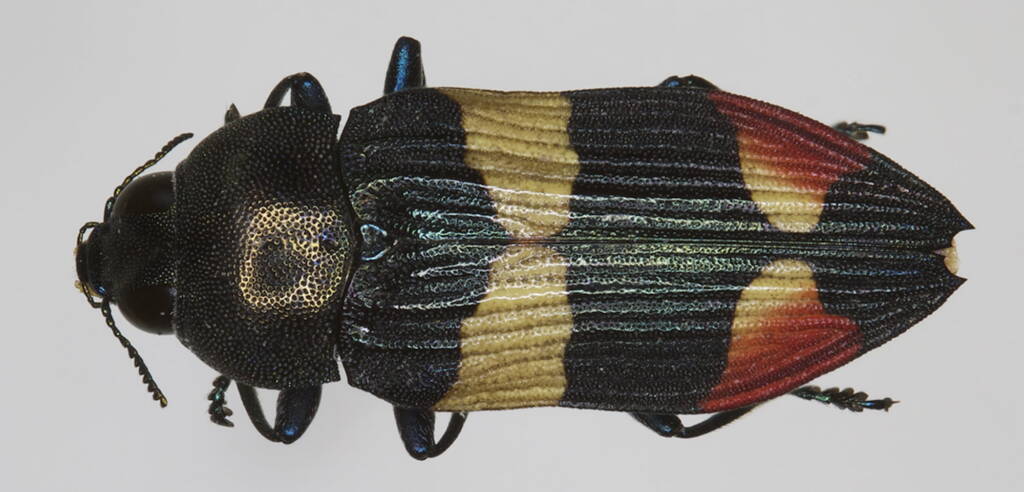

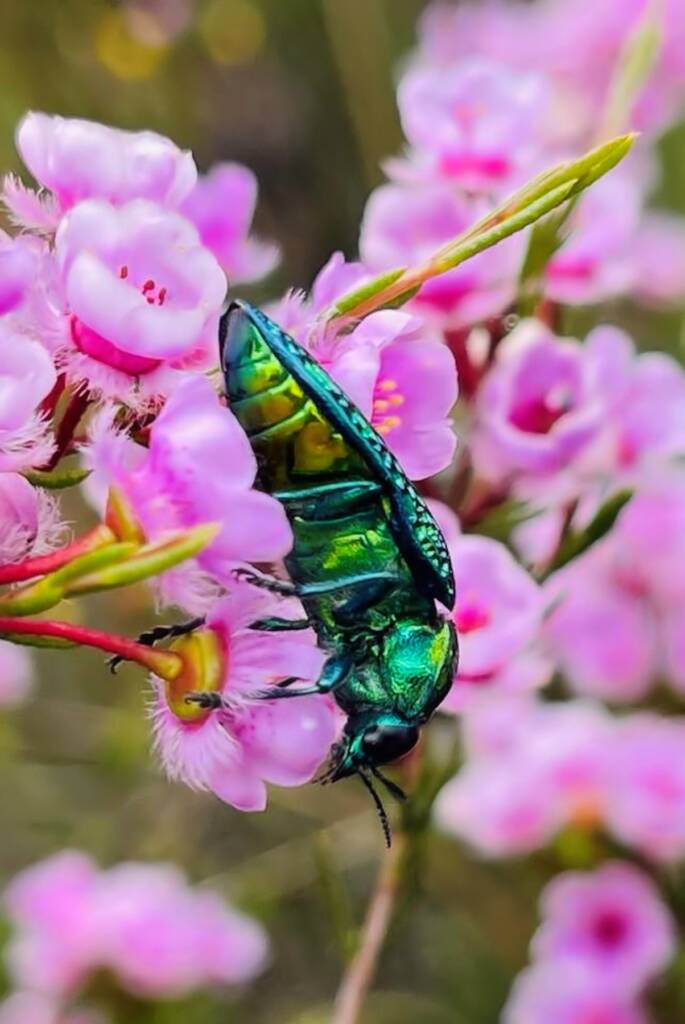


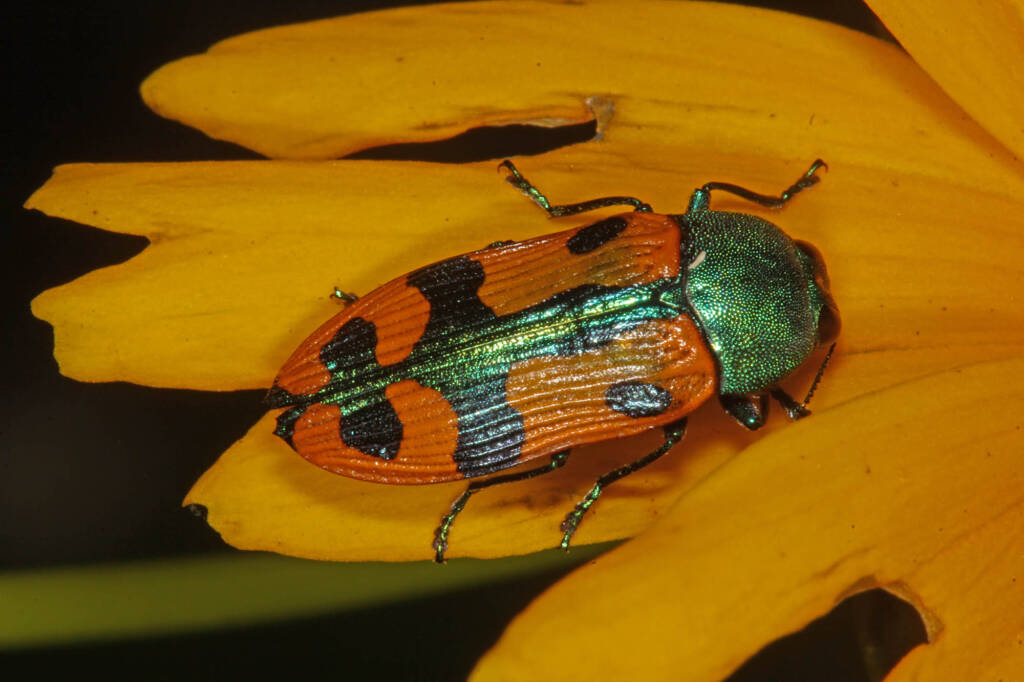
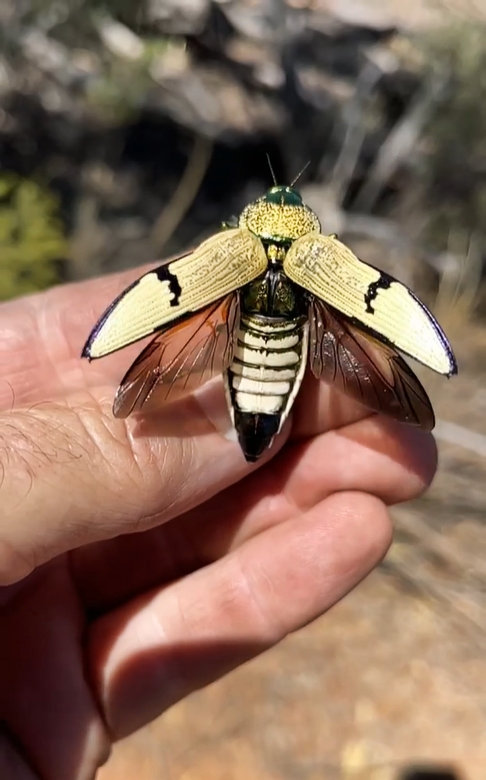
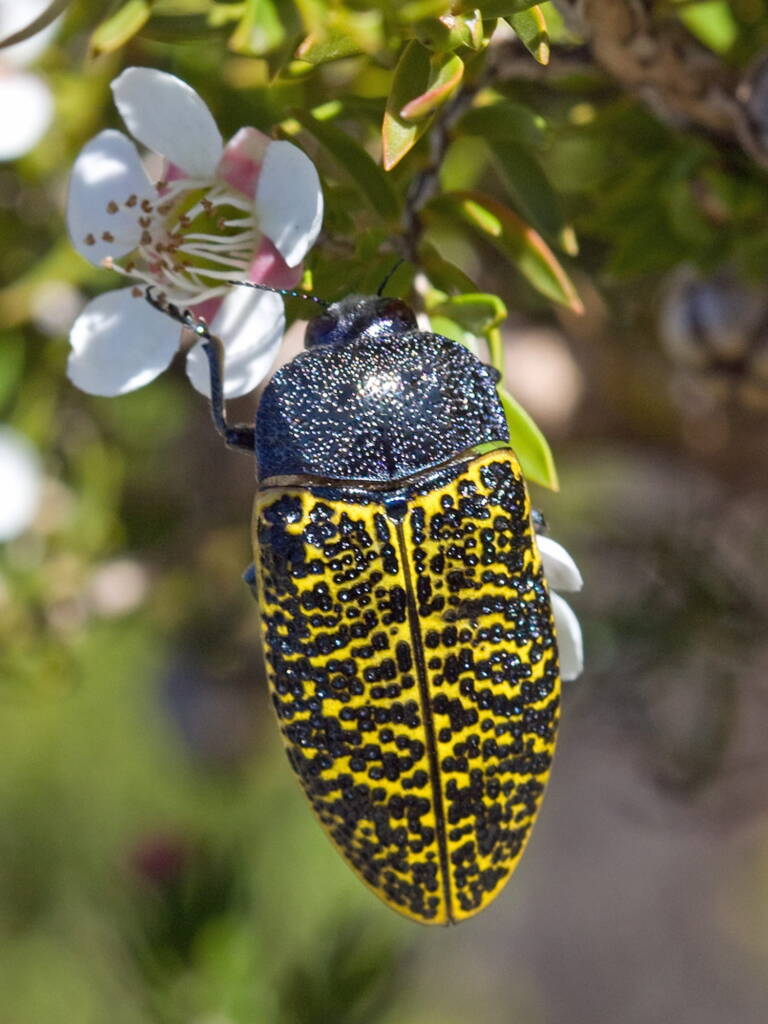
Found across Australia, the Jewel Beetles are found in all terrestrial habitats, from the lowland rainforest to the alps, often seen in regions of lush vegetation, along rivers and lakes, to arid desert regions, where only hardy native plants survive. Many Jewel Beetles are seen during the warmer months on the flowers of trees in forests, woodlands and heath, with some living on the hardy native plants of the arid interior. Many adult Jewel Beetles can be seen flying around at the top of tall flowering trees and seen feeding on the flowers, such as on the blossoms of the Eucalyptus. There are some adult Jewel Beetles that are leaf feeders. Most adult Melobasis species and larvae, are associated with Acacia flora.

The larvae are wood borers, found feeding on the sapwood under the bark of native shrubs and trees. There are also a few species known to be leaf miners or gall forming species. The larvae look like fleshy, white, legless grubs with strong mandibles. They pupate inside the wood of the host plant, then the adults emerge, boring their way to the outside.

When the adult Jewel Beetles emerge, they feed, mate and die in a relatively short time. Depending on the species of Jewel Beetle, the adult beetles may live for just one or two days and up to about two weeks.

The Jewel Beetles vary in size from small to large beetles, measuring from 3 to 65 millimetres in length. Most have an elongated body shape that tapers towards the abdomen and a short head, which fits closely into the broader thorax.
The elytra are longitudinally grooved, usually brightly coloured, sometimes having a metallic sheen. The eyes are large and they have short antennae. They will retract their legs against their body for protection. When disturbed, some Jewel Beetles are known to tuck their antennae and legs into their body and drop to the ground as a defence against predators.

They are a popular species to many beetle collectors, and those who also raise them in captivity, and to document. Jewel Beetles have been used by people in clothing, as jewellery, ornaments, sculptures and even religious shrines.

The popularity of jewel beetles was so great that they were exported in large numbers out of Australia. Due to this, in 1978 Jewel Beetles were listed for protection under the WA Wildlife Conservation Act — a first for invertebrates in Australia. (Permits and conditions vary for collecting insects in Australia, see CSIRO link in footnotes).14

- Scientific classification
- Kingdom: Animalia
- Phylum: Arthropoda
- Subphylum: Hexapoda
- Class: Insecta
- Informal: Pterygotes
- Order: Coleoptera
- Suborder: Polyphaga
- Superfamily: Buprestoidea
- Family: Buprestidae
- Subfamily:
- Agrilinae Gory & Laporte, 1835
- Bufrestinae
- Buprestinae Leach, 1815
- Chrysochroinae Laporte, 1835
- Polycestinae Lacordaire, 1857
Footnote & References
- Buprestidae, Photographs © Mark Hanlon
- Metaxymorpha gloriosa, Castiarina acuminata © Hongming Kan
- Diphucrania stigmata © Michael Lun
- Castiarina rufipennis © Tony Eales
- Information and photographic source Australasian Beetles Only, Facebook group, https://www.facebook.com/groups/1180404322409639/
- Castiarina octospilota © Marc Newman, Flickr
- Stigmodera macularia, Castiarina sexplagiata © Michael Jefferies, Flickr
- Castiarina crenata, Castiarina xanthopilosa © Marianne Broug
- BUPRESTIDAE: Jewel Beetles, Insects and their Allies, CSIRO, https://www.ento.csiro.au/education/insects/coleoptera_families/buprestidae.html
- Buprestidae Leach, 1815, Atlas of Living Australia, https://bie.ala.org.au/species/https://biodiversity.org.au/afd/taxa/625b4017-8b08-40a9-adf9-77406ba85f8b
- Jewel Beetles (Family Buprestidae), iNaturalistAU, https://inaturalist.ala.org.au/taxa/54964-Buprestidae
- Buprestidae, Wikipedia, https://en.wikipedia.org/wiki/Buprestidae
- Lang, P.J. ‘Buprestidae of South Australia’ website at http://syzygium.xyz/buprestidae/taxonomy.php
- Permit requirements for collecting insects in Australia, CSIRO, https://www.csiro.au/en/about/facilities-collections/collections/anic/permit-requirements
BuprestidaeMore Buprestidae Jewel Beetles Astraeus Calodema plebeia Castiarina Cyrioides Diadoxus Diphucrania Melobasis Merimna atrata Metaxymorpha gloriosa Stigmodera Temognatha Torresita cuprifera
ColeopteraAmarygmus sp Anoplognathus sp Aphanestes gymnopleura Buprestidae Cerambycidae Coleoptera (Beetles) Curculionidae Digitonthophagus gazella Dung Beetle Eretes australis Helea scaphiformis Johannica gemellata (Pandorea Leaf Beetle) Ladybirds (Beetles) Lepidiota Lucanidae Neospades sp Lycidae Omorgus Paropsine Beetle Paropsisterna sp Pittosporum Leaf Beetle (Lamprolina impressicollis) Protaetia fusca Pterohelaeus sp Rhipiceridae Scarabaeidae Xylophilostenus octophyllus
InsectsBees Beetles Blattodea Butterflies Coleoptera Cicada Crabronidae Diptera Dragonflies & Damselflies Formicidae Hemiptera Heteroptera (True Bugs) Mango Planthopper Moths Orthoptera Orthopteroid Processionary Caterpillar Stink Bugs, Shield Bugs and Allies Syrphidae Wasps Water Scorpion (Laccotrephes tristis) Witchetty Grub
